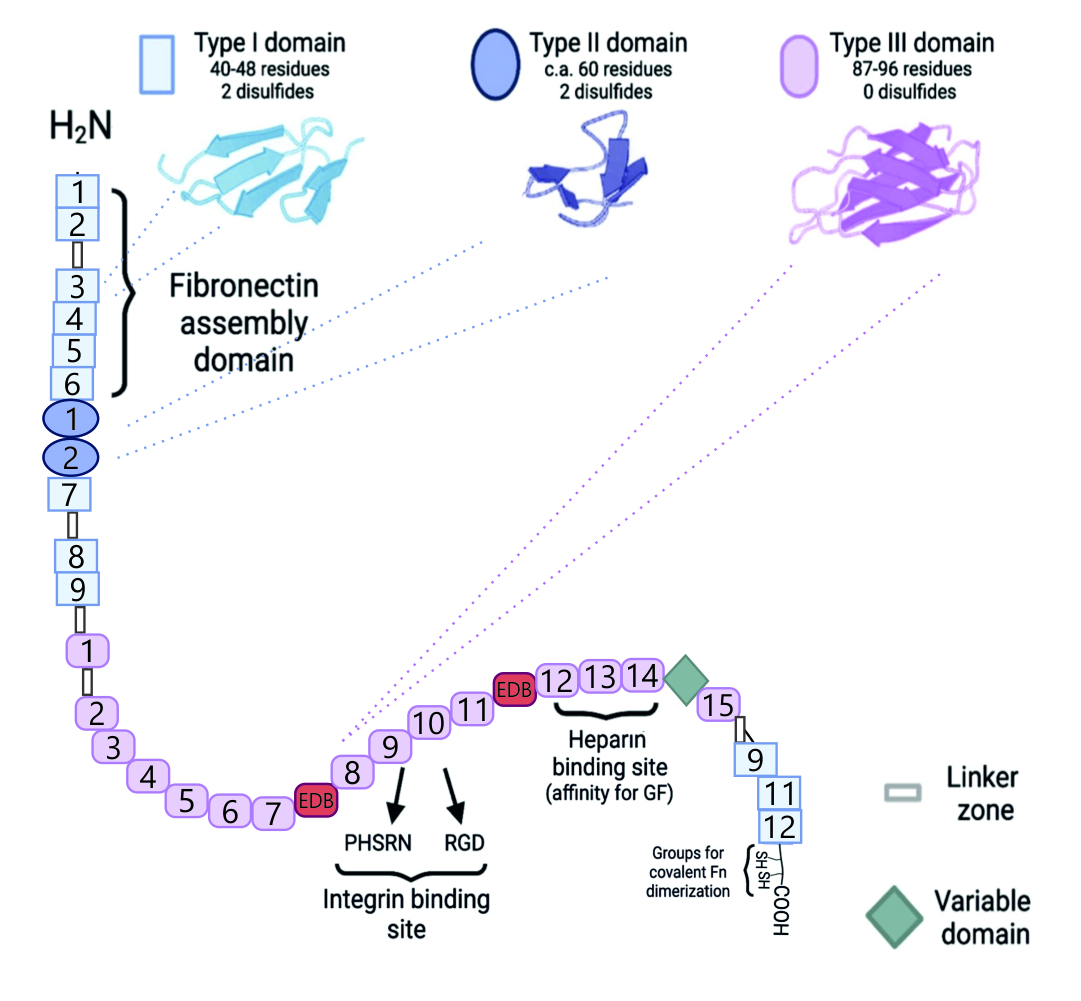1. Fibronectin is both an ECM component and moderately abundant 460-kDa glycoprotein in blood, present at 300 to 400 μg/mL (0.6 to 0.9 μmol/L) in plasma secreted by Human Hepatocytes.
2. Exists as a protein dimer, consisting of two nearly identical polypeptide chains linked by a pair of C-terminal disulfide bonds. Each fibronectin subunit has a molecular weight of ~230–~275 kDa and contains three types of modules: type I, II, and III
3. 2 types of Fibronectins are present in vertebrates:
- Plasma Fibronectin – secreted by hepatocytes in conc of 300 to mcg/ml
- Cellular FN – Secreted by various cells , primarily fibroblasts
4. Circulating Plasma FN is inactive, but gets activated by interaction with various cell signaling agents during wound

Understanding FIBREGA

Cell Adhesion And Migration
A critical mediator of cell adhesion. It contains binding sites for integrins, a family of cell surface receptors. Through integrins, Fibronectin binds to all the cells involved into natural wound healing including Fibroblasts, Endothelial Cells, Epithelial Cells (Keratinocytes), Immune Cells ( Neutrophils, Macrophages and Lymphocytes) and Platelets.
Mechano-chemical Matrix Assembly
It undergoes conformational changes and self-association, forming fibrils that contribute to the structural integrity of the matrix. These fibronectin fibrils serve as a scaffold for other Extra Cellular Matrix components and facilitate the organization of cells during tissue regeneration.
Cell-cell Signaling
It activates intracellular signaling cascades through integrin-mediated signaling or by binding to specific cell surface receptors such as syndecans and integrin-associated proteins. These signaling events modulate various cellular processes. including proliferation, migration. and differentiation, which are crucial for effective wound healing. It implies binding of Fibronectin to various proteins including Collagen, Gelatin, Heparin Type I & ll. Fibrin I & ll, Tenascin, Transglutaminases and Isomerases.
Growth Factor Regulation
Fibronectin interacts with growth factors, such as transforming growth factor-beta (T GF-B), platelet-derived growth factor (PDGF). Fibroblast Growth Factor (FGF), Transforming Growth Factor (TGF) and vascular endothelial growth factor (VEGF). Fibronectin sequesters these'growth factors within the ECM, protecting them from degradation and significantly increasing their localized availability. This regulation influences cell behavior and the stimulation of critical wound healing processes, such as angiogenesis and tissue regeneration.
Role of fibronectin in clinical practice
The physiological process of wound healing is achieved through a linear path way consisting of four temporarily and spatially overlapping phases: hemostasis, inflammation, proliferation, and remodeling phases[12,13]

